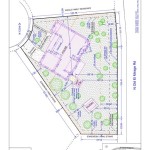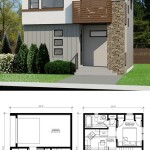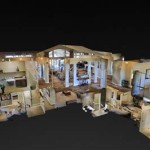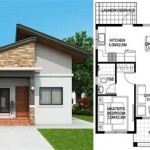500 Sq Ft House Plans Cost: A Comprehensive Guide
The allure of downsizing or building a compact, efficient living space has driven increasing interest in 500 sq ft house plans. These smaller homes offer affordability, reduced environmental impact, and a simpler lifestyle. However, understanding the costs associated with these builds is crucial for effective budgeting and project management. This article provides a detailed examination of the various factors influencing the cost of a 500 sq ft house, offering insights into planning and potential cost-saving strategies.
The overall cost of a 500 sq ft house is not a fixed figure. It’s influenced by a range of variables, including location, building materials, labor costs, design complexity, and selected finishes. Therefore, a realistic budget requires a thorough understanding of these contributing factors. A preliminary estimate can be helpful, but it is essential to obtain detailed quotes from contractors and suppliers for a more accurate projection.
Key Factors Influencing 500 Sq Ft House Plan Costs
Several key factors contribute significantly to the overall cost of building a 500 sq ft house. Understanding these factors allows for a more informed approach to budgeting and helps in making strategic decisions that can potentially lower expenses.
1. Location and Land Costs: The geographical location of the build site is a primary determinant of cost. Land prices vary significantly based on factors such as proximity to urban centers, accessibility, zoning regulations, and the overall demand for real estate in the area. In metropolitan areas, land costs can constitute a substantial portion of the total project budget. Furthermore, building codes and permit fees can also vary considerably between different jurisdictions, adding to the overall expense.
For example, building on a rural lot with fewer restrictions might be significantly cheaper than building within city limits where land is scarce and regulations are stricter. Site preparation costs, such as clearing vegetation, leveling the ground, and running utilities, can also be heavily influenced by the location and the existing conditions of the land.
2. Building Materials: The choice of building materials has a direct and significant impact on the overall cost. Basic materials like wood framing, concrete foundations, and asphalt shingles are generally more affordable than premium alternatives like steel framing, concrete slab foundations with radiant heating, and slate roofing. The selection of materials should consider not only the initial cost but also long-term factors such as durability, maintenance requirements, and energy efficiency. For instance, while energy-efficient windows and insulation might have a higher upfront cost, they can lead to significant savings on heating and cooling bills over the lifespan of the house.
Sustainable and eco-friendly materials, such as reclaimed wood or recycled content products, can sometimes be more expensive than conventional options, but they offer environmental benefits. The availability of materials locally can also affect costs, as transportation expenses can add to the overall budget.
3. Labor Costs: Labor costs constitute a significant portion of the overall construction budget. These costs encompass the wages paid to construction workers, including carpenters, plumbers, electricians, and other skilled tradespeople. Labor rates vary depending on the region, the level of experience of the workers, and the demand for skilled labor. Areas with a high cost of living typically have higher labor rates.
The complexity of the design can also influence labor costs. Intricate designs with complicated structural elements or custom features require more specialized skills and time, leading to higher labor expenses. Hiring a general contractor to oversee the project can also impact labor costs, as the contractor's fee is typically a percentage of the overall construction budget.
Estimating the Cost of a 500 Sq Ft House
Several approaches can be used to estimate the cost of a 500 sq ft house. A common method involves using a cost-per-square-foot estimate, which is derived from the average construction costs in a particular region. However, this method provides only a rough estimate, as it does not account for the specific design details, material choices, or site conditions.
A more accurate estimate can be obtained by developing a detailed cost breakdown that includes all the individual components of the project. This involves creating a list of all the materials needed, along with their estimated costs, and obtaining quotes from contractors for the various phases of the construction process, such as excavation, foundation work, framing, roofing, plumbing, electrical work, and finishing. This detailed cost breakdown allows for a more precise projection of the overall project budget.
Another approach is to consult with a professional estimator who specializes in construction projects. These estimators have experience in analyzing construction plans and specifications and can provide a realistic estimate of the costs involved. Engaging an estimator can be particularly beneficial for complex projects or when dealing with unfamiliar construction techniques.
It's crucial to factor in a contingency fund, generally around 10-15% of the total estimated cost, to cover unforeseen expenses or unexpected delays that may arise during the construction process. This contingency fund provides a buffer to prevent the project from going over budget. Examples of unexpected expenses may include encountering unforeseen site conditions, such as buried utilities or unstable soil, or changes to the design during construction.
Strategies for Reducing 500 Sq Ft House Plan Costs
Building a 500 sq ft house doesn't have to break the bank. Several strategies can be employed to reduce construction costs without sacrificing quality or functionality. Careful planning, smart material choices, and efficient construction techniques can all contribute to significant cost savings.
1. Simplify the Design: Complex architectural designs can significantly increase construction costs. Opting for a simple, rectangular layout with a straightforward roofline can reduce the amount of materials needed and the labor required. Eliminating unnecessary features, such as dormers, bay windows, or intricate trim work, can also contribute to cost savings. Focusing on functionality and efficient space utilization is key to maximizing the value of a small house.
A well-designed, simple floor plan ensures efficient use of space, minimizing wasted areas and maximizing usable square footage. This can translate to lower material costs and reduced construction time. Consider open-concept layouts to create a sense of spaciousness in a small home. In addition, think about multi-functional spaces such as a living room that can double as a guest bedroom.
2. Choose Cost-Effective Materials: Selecting materials wisely can significantly impact the budget. Instead of opting for expensive, high-end finishes, consider more affordable alternatives that still provide durability and aesthetic appeal. For example, laminate flooring can be a cost-effective substitute for hardwood, and vinyl siding can be an affordable alternative to brick or stone. Explore reclaimed or recycled materials, which can often be sourced at a lower cost than new materials. However, ensure these materials meet building codes and safety standards.
Consider sourcing materials directly from suppliers or negotiating discounts with contractors to reduce material costs. Buying in bulk can sometimes result in significant savings, especially for commonly used materials like lumber and drywall.
3. DIY When Possible (and Safe): Completing some tasks yourself can save on labor costs, but it's crucial to only undertake projects that are within your skill set and comfort level. Painting, landscaping, and some simple carpentry tasks are often suitable for DIY, while more complex tasks like plumbing, electrical work, and structural framing should be left to professionals to ensure safety and compliance with building codes. Improperly executed work can lead to costly repairs and potentially hazardous situations.
If you plan to DIY certain tasks, ensure you have the necessary tools and equipment, and take the time to learn the proper techniques. Watching instructional videos or taking a DIY workshop can help you gain the skills needed to complete the projects successfully.
4. Optimize Space Utilization: Careful space planning is paramount in a 500 sq ft house. Built-in storage solutions, such as shelving units and cabinets, can maximize vertical space and eliminate the need for bulky furniture. Multi-functional furniture, such as sofa beds and storage ottomans, can serve multiple purposes and save space. Utilizing vertical space by installing shelving that stretches to the ceiling is also a good option. Consider creative storage solutions, such as under-bed storage or wall-mounted organizers, to keep clutter at bay and maximize the usable space in the home.
Incorporate natural light through strategically placed windows and skylights to create a brighter and more spacious feel. Good lighting can transform a small space, making it feel larger and more inviting.

500 Square Feet House Plan Construction Cost Acha Homes

Single Bedroom House Plans With Staircase Under 500 Sq Ft For 120 Yard Plots Small Hub

Single Bedroom House Plans With Staircase Under 500 Sq Ft For 120 Yard Plots Small Hub

Six Low Budget Kerala Model Two Bedroom House Plans Under 500 Sq Ft Small Hub

Six Low Budget Kerala Model Two Bedroom House Plans Under 500 Sq Ft Small Hub

500 Square Feet Home Design Ideas Small House Plan Under Sq Ft

21 X 20 Small Individual One Bedroom House 500 Sq Ft

Single Bedroom House Plans With Staircase Under 500 Sq Ft For 120 Yard Plots Small Hub

500 Square Foot Smart Sized One Bedroom Home Plan 430817sng Architectural Designs House Plans

Pin On Small House Plans
Related Posts








